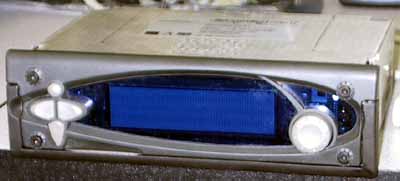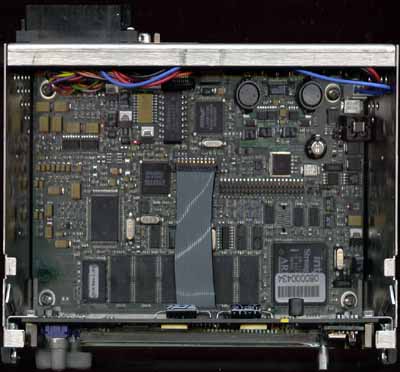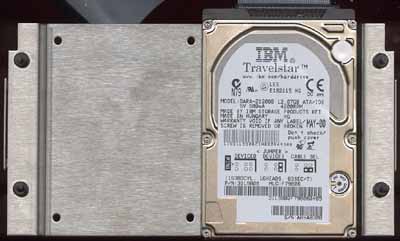MP3 meets Car Audio: Empeg Mark II in-dash Car MP3 Player
by Anand Lal Shimpi on September 18, 2000 3:17 AM EST- Posted in
- Smartphones
- Mobile
 Just
like the mother of invention caused the production of the MP3 Mobile in 1998,
the need for a more commercially viable version of the original empeg car player
brought about the advent of the successor to the Mk.1, the empeg car Mark II
(Mk.2).
Just
like the mother of invention caused the production of the MP3 Mobile in 1998,
the need for a more commercially viable version of the original empeg car player
brought about the advent of the successor to the Mk.1, the empeg car Mark II
(Mk.2).
According to empeg, the biggest driving force for the production of the Mk.2 was the need for a design with nearly 100% surface mounted components and the need for an automated testing rig, more specifically a bed of nails test rig which is much like what the motherboard manufacturers in Taiwan use in their motherboard production lines.
The heart of the Mk.2 remained the 220MHz Intel StrongARM S-1100-DA processor, however the PCB design was much improved. According to Empeg, the 220MHz StrongARM processor is only at approximately 30% CPU utilization while playing an MP3, leaving quite a bit of headroom for more complex applications.
The Mk.2 received a memory upgrade to 12MB of 60ns FPM DRAM, however other than that, the foundation of the Mk.2 was very similar to its predecessor.
The Mk.2 still runs Linux, however in order to actually support the Linux community as well as those that weren’t blessed with USB support, the Mk.2 adds a 10Mbit Ethernet input on the actual head unit itself for uploading songs. According to Empeg, a hardware limitation prevented the use of 100Mbit Ethernet. Serial and USB interfaces (the latter exists only under Windows 9x/2000) are still supported.
Internally, the Mk.2 can still hold up to two 2.5” Notebook drives at up to 17mm in height. As we mentioned before, 2.5” drives are naturally more shock resistant than their 3.5” desktop counterparts, but in order to aid this and prevent any skipping during play the drives are also mounted on a shock resistant platform.
The drives also spend quite a bit of their time spun down due to a very efficient caching system that we’ll talk about later. Since the empeg is a hard drive based unit running Linux, the question of boot time is an obvious one. Thankfully, the combination of the 4200 RPM, a minimal Linux configuration, and a system board designed for quick boot times, the empeg is ready to go in about 5 seconds after turning it on.
The available configurations for the Mk.2 are as follows:
|
Model |
Capacity*
|
Disk Configuration
|
Price
|
|
6GB |
100
hours
|
6GB
+ spare
|
$1199 |
|
12GB |
200
hours
|
12GB
+ spare
|
$1299 |
|
18GB |
300
hours
|
18GB
+ spare
|
$1549 |
|
36GB |
600
hours
|
18GB
+ 18GB
|
$1949 |
*Assuming 1MB/min at 128Kbps













0 Comments
View All Comments